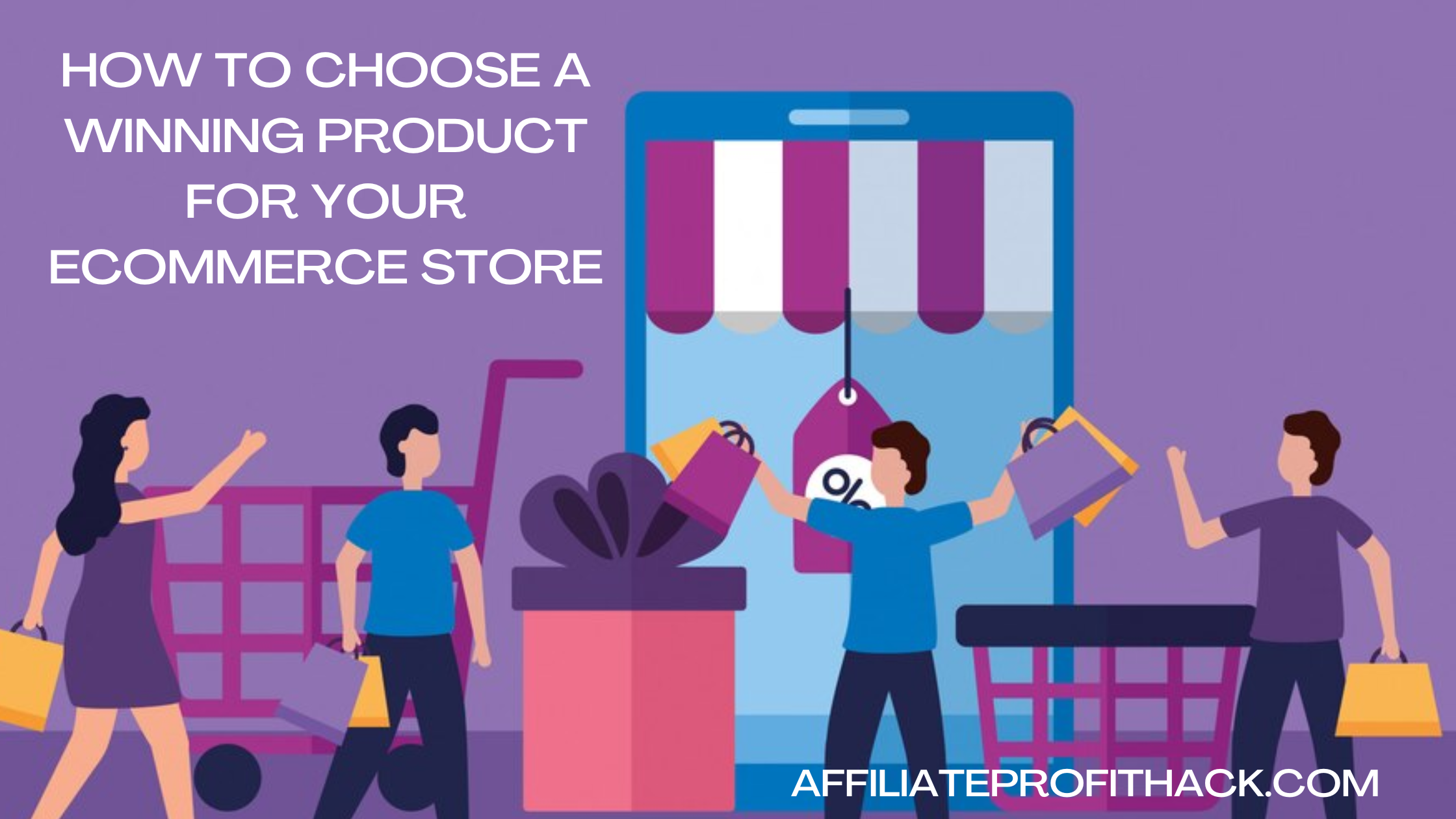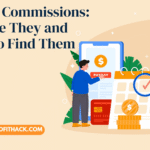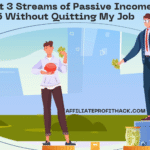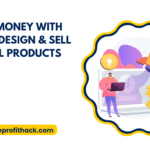Welcome to my article “How to Choose a Winning Product for Your Ecommerce Store”.
You have decided to dive into the world of ecommerce — welcome to the digital jungle, where products can either make you rich or make you wonder why you ever left your 9-5. Choosing the right product is like picking a life partner for your business: you want something attractive, profitable, and not already taken by every other entrepreneur on Instagram.
In this guide, I will walk you through the actual steps to find a winning product for your ecommerce store — no fluff, no “just follow your passion” nonsense. We’re talking niche research, data validation, profit margins, competition analysis, and small-scale testing. Basically, everything you need to find a product that not only sells but scales. Ready to stop guessing and start selling? Let’s get into it.
My Best Recommended & Proven Way to Make $100-$300 Daily – Watch This FREE Video to START >>>
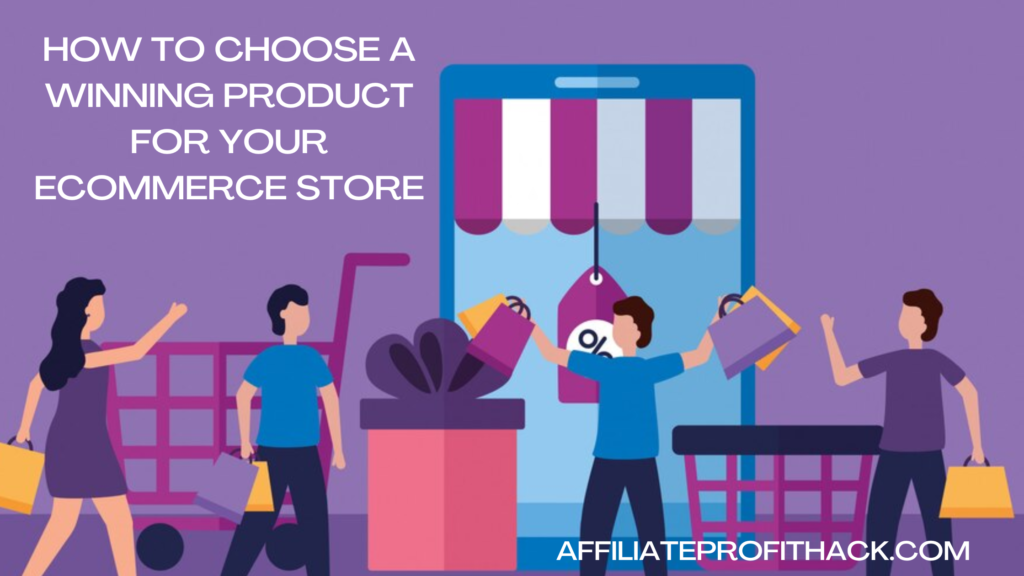
Identify a Profitable Niche with Passion + Demand
Let’s clear one thing up real quick: passion alone won’t pay the bills. You might love medieval sword collecting or underwater basket weaving, but if no one else is searching for it (or willing to pay for it), your ecommerce empire might be short-lived.
That said, passion still plays an important role — because building a store, creating content, and talking about the same product 24/7 gets real boring, real fast if you don’t actually like the niche. The sweet spot? A niche you’re excited about and that has proven market demand. Translation: people are already buying in this space, and you’re not shouting into a digital void.
Start by thinking about what you’re into — hobbies, problems you’ve solved, things you spend money on. Then plug those ideas into tools like Google Trends (to see if they’re growing or dying), Amazon Best Sellers (to see what’s moving), and even TikTok or Instagram (because Gen Z basically runs ecommerce now). You’re looking for patterns, trends, and signs of life.
For example, let’s say you’re into fitness. That’s a broad niche, so niche it down: resistance training, home workouts, post-pregnancy fitness, etc. The more specific, the better. “Yoga mats” might be competitive, but “eco-friendly cork yoga mats for beginners” has both demand and room to stand out.
Pro tip: Don’t just chase trends. A trending product might make you quick cash, but a stable niche with ongoing demand builds long-term income. Trends are great for TikTok dances — not always for your store’s survival.
So remember: passion keeps you going, but demand keeps the store alive. Find both, and you’re already ahead of 90% of new sellers.
Validate Product Demand with Real Data
You have got a product idea and you’re feeling really good about it. Maybe your cousin said it’s genius. Maybe your dog wagged its tail when you said the name out loud. But here’s the truth: your gut feeling is not market research (sorry, gut).
Before you go all-in on ordering 500 units of reusable glow-in-the-dark dog raincoats, let’s make sure actual people want to buy it. And by people, I mean strangers on the internet with wallets—not just your supportive friends.
My Best Recommended & Proven Way to Make $100-$300 Daily – Watch This FREE Video to START >>>
Start with search volume. Use tools like Ubersuggest, Keywords Everywhere, or Semrush to find out if people are actively searching for your product. If a term gets 10 searches a month… that’s a red flag. On the other hand, if “minimalist wallets for men” is pulling in thousands of monthly searches, that’s your green light.
Then there’s marketplaces—your best friends for spying on what’s hot. Check Amazon Best Sellers, Etsy, AliExpress, and even eBay. Look for high sales, lots of reviews, and repeat purchases. If a product has thousands of reviews, you can bet it’s not just your grandma buying it on repeat.
Also, don’t sleep on social proof. Go snoop around TikTok, Instagram, and Reddit. Are people talking about this product? Raving about it? Complaining about it? Even better. Problems = opportunities to improve. And if you see influencers casually dropping your product niche into their content? You’re onto something.
Bottom line: data > hope. You don’t need a crystal ball — just some solid tools and 30 minutes of research to figure out if your “great idea” actually has an audience. Validate it now, or prepare to host a very awkward garage sale later.
Analyze Profit Margins and Shipping Feasibility
Let’s be honest—getting sales feels great… until you realize you’re making $2 profit per order and paying $3 in transaction fees. Welcome to the world of bad margins, where your store is working full-time and still can’t afford coffee.
Before you fall in love with a product, you need to run the numbers like a responsible adult (even if your inner entrepreneur just wants to “wing it”). This is where profit margins come in. The simple rule? If it doesn’t give you at least a 3x markup, it’s probably not worth it—unless you’re selling in bulk or planning to live off volume, which is a whole other game.
Let’s say you find a product that costs ₹300 to source. Ideally, you want to sell it for ₹900 or more to cover:
- Cost of goods
- Shipping
- Platform fees
- Marketing (yes, those Facebook and Instagram ads that eat your wallet)
- And still have some profit left to buy yourself dinner
And speaking of shipping—don’t ignore it. Ever ordered something and realized shipping cost more than the product? Yeah, don’t be that store. Heavy, bulky, fragile, or oddly shaped items can kill your margins faster than a failed product launch.
Look for products that are:
- Lightweight (less shipping cost)
- Compact (easier to store or dropship)
- Not likely to break in transit (unless you enjoy refund emails)
Bonus tip: if you’re dropshipping or using print-on-demand, double-check fulfillment times too. Fast shipping = happy customers. Slow shipping = PayPal disputes and angry emails written in all caps.
Long story short: a great product isn’t great if it doesn’t make money and reach the customer without drama. Keep your calculator handy—this part is less sexy, but it’ll save your business.
Study the Competition (But Don’t Get Scared)
Competition — the word that sends most new store owners into a mild panic spiral. You come up with what feels like the perfect product idea, do a quick search… and boom. Ten stores are already doing it, five of them have fancier websites, and one is running Facebook ads like it owns Meta.
Breathe. Competition is not a red flag — it’s proof the market exists. No competition? That’s more suspicious than exciting. It probably means there’s no demand, or someone already tried and quietly gave up.
My Best Recommended & Proven Way to Make $100-$300 Daily – Watch This FREE Video to START >>>
Now, instead of crying into your Shopify dashboard, let’s use your competitors to your advantage. Start with the basics:
- Search your product idea on Google, Amazon, and Etsy
- Check out the top-ranking stores and listings
- Visit their websites — look at pricing, product pages, offers, and reviews
- Peek into the Facebook Ad Library to see what kind of ads they’re running (yes, this is allowed — it’s not spying, it’s research)
Look for what they’re doing well (so you can learn) and what they’re doing poorly (so you can do better). For example, if reviews are complaining about slow shipping or bad packaging, that’s your window to swoop in with a better customer experience.
Also, find ways to differentiate. You don’t have to reinvent the product — just position it differently. Niche it down, change the branding, bundle it with something useful, or market it to a slightly different audience. You’re not trying to be a clone; you’re trying to be the better option.
Remember: you’re not too late. You’re just getting started. The presence of competition means people are buying — now it’s your turn to figure out how to make them buy from you.
Test Before You Scale (Validate with Real Buyers)
Your product looks promising, your niche is legit, and you’ve crunched the numbers. Now what? Time to sell out and start ordering 1,000 units from a factory you found 12 minutes ago?
Not quite. Before you go full beast mode, you’ve got to test. And no, asking your mom if she’d buy it doesn’t count. She’d probably say yes to a brick if you put your logo on it.
Testing means putting your product in front of real buyers—complete strangers who don’t know you, don’t owe you anything, and will be brutally honest with their wallets. That’s the kind of feedback that matters.
Here’s how you can start small:
- Run a simple Facebook or Instagram ad with a low budget (₹1,000–₹2,000 is enough for initial signals)
- List the product on Etsy, Amazon, or your own store using Shopify or WooCommerce
- Try a shoutout from a micro-influencer in your niche (they’re affordable and often more engaged)
- Offer a beta discount or early access deal to encourage people to buy and give feedback
Your goal here isn’t to make millions overnight. You’re testing things like:
- Are people clicking the ad?
- Are they adding to cart or bouncing?
- Do they actually buy?
- Are they happy once they get it?
If the product flops, great — you saved time, money, and a future warehouse full of regret. If it performs well, now you’ve got proof. That’s when you scale, tweak your messaging, maybe invest in better creatives, and double down.
The best part? Testing takes the guesswork out of ecommerce. No more “I think this will work” — now you know. And knowing is how real businesses are built.
Conclusion
There you have it. Choosing a winning product for your ecommerce store isn’t about getting lucky with the latest trend or picking something you think people will buy. It’s a process. A mix of passion, data, numbers, and a bit of trial and error. But don’t worry — you don’t have to go through the process blindfolded. We’ve just mapped out the path for you.
First, find your niche: Choose something that excites you but also has proven demand. Second, validate your product with real data and real buyers — your intuition isn’t enough. Then, get your margins right and make sure shipping doesn’t turn your profit into pennies. Study the competition but don’t let it paralyze you with fear. There’s room for you to shine, and in fact, there’s often room for improvement in everything that’s already out there. Finally, test before you scale: no need to bet the farm on a product until you’ve tested it in the real world and gotten feedback from actual paying customers.
But here’s the catch — none of this matters if you don’t take action. It’s easy to get stuck in the research phase, analyzing data, checking tools, and reading blogs (hey, I’m not complaining). But the secret to success in ecommerce isn’t just in what you know, it’s in what you do. Test it. Tweak it. Scale it.
My Best Recommended & Proven Way to Make $100-$300 Daily – Watch This FREE Video to START >>>
Ready to stop guessing and start selling? Go out there, pick that winning product, and prove the market wrong. And if it doesn’t work? Dust yourself off, tweak, and try again. After all, the best ecommerce entrepreneurs are the ones who got comfortable failing forward.
Thank you for reading my article “How to Choose a Winning Product for Your Ecommerce Store” till the end. Hope it helped you. See you with another article.
